DACF Home → Bureaus & Programs → Maine Natural Areas Program → Communities, Plants, and Animals → Rare Plants → Primula laurentiana
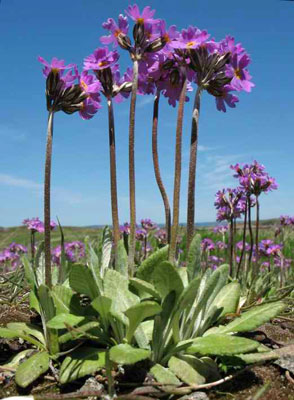 Photo by Marilee Lovit
Photo by Marilee Lovit
Primula laurentiana Fern.
Bird's-Eye Primrose
- State Rank: S2
- Global Rank: G5
- State Status: Special Concern
Habitat: Ledges, cliffs, and meadows chiefly calcareous or eastern coastal [Rocky summits and outcrops (non-forested, upland)]. [Rocky coastal (non-forested, upland)].
Range: Labrador south to Maine northwest to Ontario.
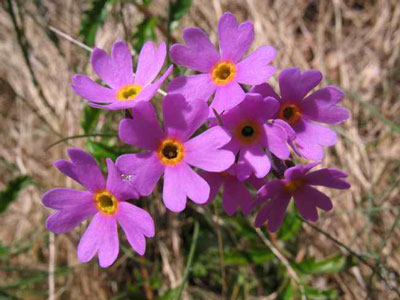 Photo by Marilee Lovit
Photo by Marilee Lovit
Aids to Identification: Primroses are low-growing perennial herbs. They have flowers that are borne singly to several on a leafless stalk called a scape. Bird's-eye primrose has flowers with 5 petals with a deep notch. Where the petals meet, they form an obvious yellow eye. The color of Bird's-eye primrose varies from lavender to purplish-blue. The basal leaves and scape are covered with whitish fuzz, known as farinose. It is similar to P. mistassinica, which is also rare in Maine. However, Bird's-eye primrose is primarily coastal (P. mistassinica grows predominantly along the St. John River in Northern Maine). The notch on the petals of P. laurentiana is much deeper than that of P. mistassinica and the sepals of P. laurentiana are longer (6-9 mm compared to 3-6 mm). The bracts of P. laurentiana beneath the umbel are saccate at their base.
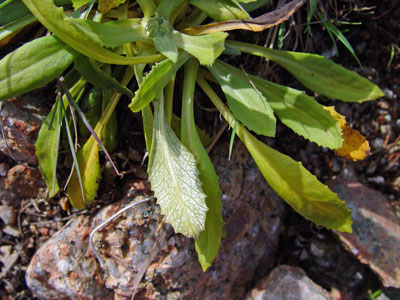
Ecological characteristics: Predominantly found along coastal rocks and ledges. Rarely inland.
Phenology: Flowering late spring and early summer.
Family: Primulaceae
Synonyms: Primula farinosa L. var. macropoda Fern.; Primula mistassinica var. macropoda (Fern.) Boivin.
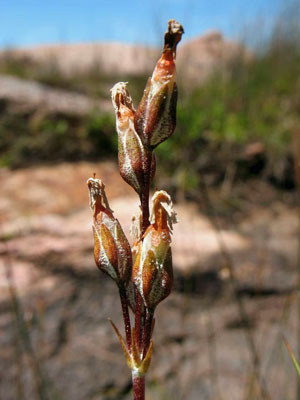 Photo by Marilee Lovit
Photo by Marilee Lovit
Known Distribution in Maine:This rare plant has been documented from a total of 7 towns in the following counties: Piscataquis, Washington.
Reason(s) for rarity: At southern edge of range. Calcareous habitat in Maine is naturally scarce.
Conservation considerations: None noted.
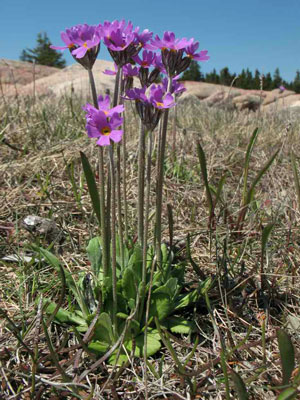 Photo by Marilee Lovit
Photo by Marilee Lovit